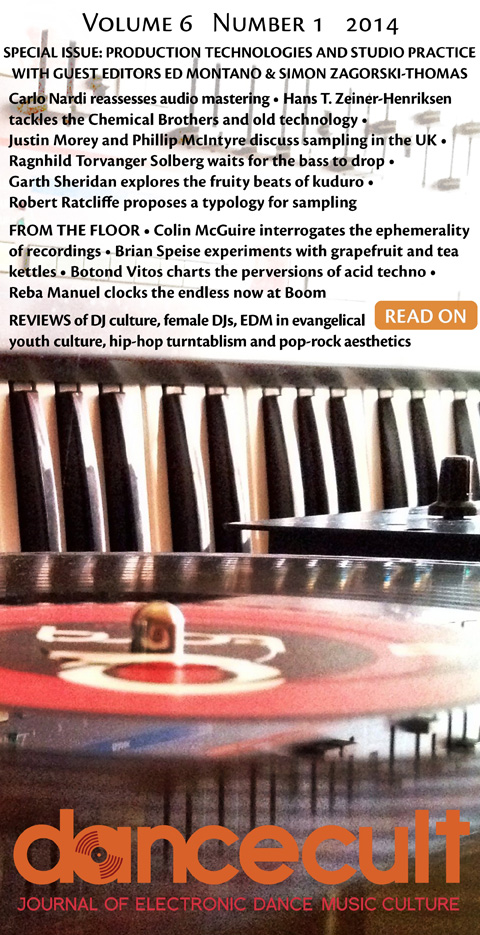“Waiting for the Bass to Drop”: Correlations between Intense Emotional Experiences and Production Techniques in Build-up and Drop Sections of Electronic Dance Music
Keywords:
EDM, emotional experiences, musical expectancy, gravity, productionAbstract
This study investigates the correlations between theories of intense emotional experiences and production techniques used in the electronic dance music (EDM) sections “build-up” and “drop”, which are designed to build tension and create a heightened emotional intensity among clubbers. This is done by descriptive and interpretive music analysis, where spectrograms and a schematic model visually represent the dominant production techniques. Through a theoretical framework consisting of musical expectancy and gravity, the analysis suggests that i) extensive use of uplifters, ii) the “drum roll effect”, iii) large frequency changes, iv) removal and reintroduction of bass and bass drum and v) a contrasting “breakdown” cause tension and anticipation, which seems to correlate with a possible intensification of emotional experience. This is furthermore discussed and more broadly related to the club experience seen as a whole, drawing on the psychological concepts Peak experience, Strong experiences with music (SEM) and Absorption.Downloads
Published
02-Jun-2014
Issue
Section
Feature Articles
License
Authors who publish with this journal agree to the following terms:- Authors retain copyright and grant the journal right of first publication with the work simultaneously licensed under a Creative Commons Attribution-Noncommercial-Share Alike License that allows others to share the work with an acknowledgement of the work's authorship and initial publication in this journal.
- Authors are able to enter into separate, additional contractual arrangements for the non-exclusive distribution of the journal's published version of the work (e.g. post it to an institutional repository or publish it in a book), with an acknowledgement of its initial publication in this journal. Such derivate works or subsequent publications must happen no less than one calendar year after the initial publication date in Dancecult.
- Authors are permitted and encouraged to post their work online (e.g. in institutional repositories or on their website) prior to and during the submission process, as it can lead to productive exchanges, as well as earlier and greater citation of published work (See The Effect of Open Access).






